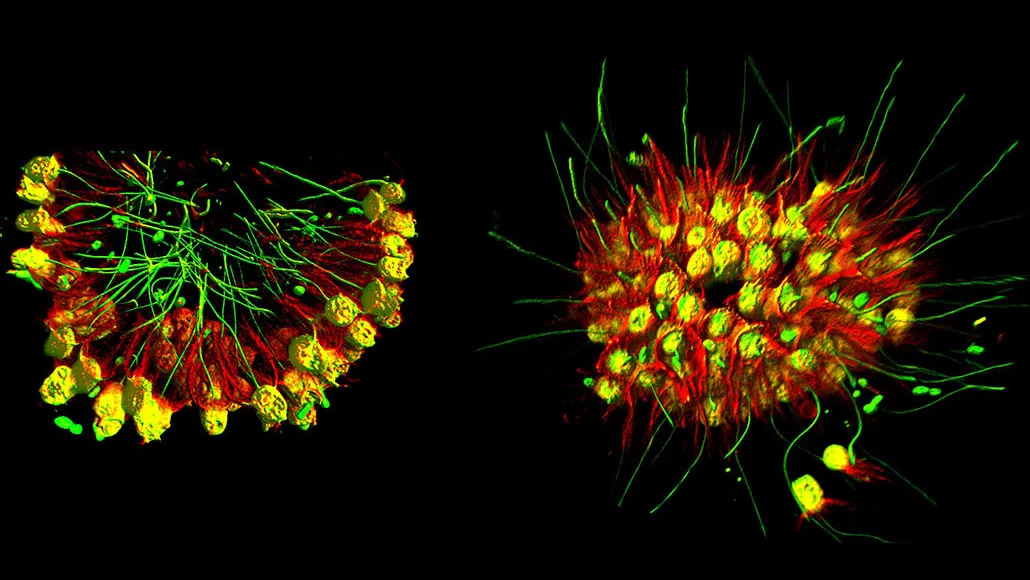
A signature characteristic of animal movement and morphogenesis are collective cell contractions that produce global tissue deformations. The origin of collective animal contractility, however, remains unclear. When surveying Curaçao's Caribbean Island for choanoflagellates, animals ' closest living relatives, researchers isolated a previously undescribed organism (C. flexa) that forms multicellular colonies in the shape of a cup. In response to changing light levels, the colonies rapidly invert their curvature, which they detect through a pathway of rhodopsin – cyclic guanosine monophosphate. Inversion requires apical contractility mediated by actomyosin and enables alternation between the action of feeding and swimming. C. flexa rapidly transforms sensory inputs into multicellular contractions. These findings may inform reconstructions of hypothesized ancestors of animals that existed before specialized sensory and contractile cells evolved.
Shared On DLIKE
